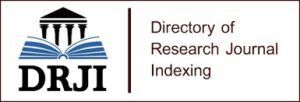Examination of Determinants of Social Capital in Elgeyo Marakwet County, Kenya
Peoples’ socio-economic livelihood is a function of various factors that work interchangeably. In most cases, however, not all factors are used, and ignoring one leads to unsustainable livelihoods and projects (Kirori, 2018). Conventionally, the role of social capital integration on socio–economic livelihoods can be visualized in access to technology, effective networking for knowledge transfers, social networks and associations, and equitable distribution of incomes across the population. However, according to County integrated Development plan CIDPII, (2018), Elgeyo Marakwet County being a rural county that majorly relies on agriculture as the main economic activity presents a contrary scenario. The role of social capital integration is crucial in social cohesion, sharing knowledge, technology, and pooling resources towards increased and efficient productivity (Government of Canada, 2003). For instance, farmers in the rural community do not only require farming inputs for their socio-economic wellness. It is important to underscore that social capital enhances interconnectivity of people-based approaches in development. This by extension would lead to active participation in solving inter-sectoral problem and their implementation by grass root organizations and additionally through the support of other development stakeholders. By focusing on socio-economic livelihoods, the issues of enhanced income, reduced vulnerability to disease and poverty, improved food security, and more sustainable use of natural resources will cause a transformation on people’s development. The area of social capital is still new, complex, and not yet well considered. This study attempts to tackle this difficulty and aims at producing a comprehensible documentation of the dynamics of social capital for reference by a range of stakeholders including researchers, scholars, and policymakers principally interested in social capital on people’s socio-economic livelihoods. It is accepted that the study will increase the understanding of social capital on people’s livelihood in rural Kenya as well as add to the formulation of rural policy and socio-economic schedule and to the pains of fighting poverty. Individuals, households, or groups in a community use social capital to produce concrete goods and essential services that are negotiable and potentially marketable. The findings of the study are of critical relevance to both national and county governments, as well as development actors interested in getting a better understanding of the role played by social capital in enhancing social economic livelihood in Kenya.
Keywords: Social Capital, Socio-Economic Livelihood, Social Capital Integration, Integrated Development, e.t.c




















